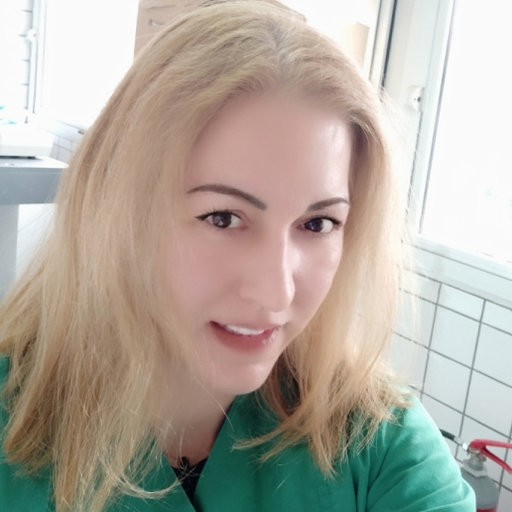
Title: General anesthesia in Geriatric patients in combination with Epidural anesthesia in the right colectomy
Speaker Presentation
Dr. Maria Dalamagka
Department of Anesthesia, General Hospital of Larisa, Greece
Abstract
Aging involves a progressive loss of functional reserve in all organ systems, to variable extend. Moreover, perioperative morbidity becomes more frequent in the elderly with steep increases after the age of 75. The elderly are more sensitive to anesthetic agents and generally require smaller doses for the same clinical effect, and drug action is usually prolonged. In the study, a 78-year-old man with Chronic obstructive pulmonary disease (COPD) and a cardiac history underwent a right colectomy with a combination of general and epidural anesthesia. The purpose of this paper is to investigate the beneficial effects of epidural anesthesia when it acts in combination with general anesthesia in elderly patients.
1. Introduction
Geriatric patients are more sensitive to anesthetic agents. Less medication is usually required to achieve a desired clinical effect, and drug effect is often prolonged. The most important outcome and overall objective of perioperative care of geriatric population, is to speed recovery and avoid functional decline.The risk from anesthesia is more related with the presence of co-existing disease than with the age of the patient. Minimizing perioperative risk in geriatric patients requires thoughtful preoperative assessment of organ function and reserve, meticulous intraoperative management of coexisting disorders, and vigilant postoperative pain control [1-8].
2.Case Study
A 78-year-old man weighing 80 kg with a history of ulcerative colitis, with known emphysematous lung lesions, COPD and a surgical abdominal aortic aneurysm came for a right colectomy. The patient was placed in an epidural catheter at the level: lumbar 1 - lumbar 2. A test dose of 3 ml Lidocaine 2% was given and then under continuous monitoring with ECG, ART, SpO2, an additional 5 ml Naropaine 0.75% was given. Anesthesia was introduced with 0.1 mg Fentanyl, 200 mg Propofol and Esmeron 100 mg. The patient was rescued on a Drager ventilator with volume control model and PEEP 5. Bronchial aspirations were performed with 100% O2 and Flexotide 250 mcg and Aeroline 100 mcg were giventracheally. An additional 2 mg of Morphine was given through the epidural catheter and a continuous infusion pump was pumped with a flow of 5 ml Naropaine 2% per hour. Maintenance of anesthesia was performed with Sevoflurane 2%, and an additional 3 mg of Morphine was given intravenously. Additionally Onda 4 mg, Dexaton 8 mg and Apotel 1g were given. The patient was hydrated with 1Lt Plasmalite slow intravenous administration and 1Lt Lactated Ringer's injection intravenous infusion. The awakening was reversed with Bridion, as repeated doses of Esmeron were given during the four-hour surgery.
3. Management and outcome
The combination of general and epidural anesthesia offers the advantage of hemodynamic stability with satisfactory analgesia and reduced intravenous opioid administration intraoperatively, resulting in the patient waking up at the end of the surgery, without being transferred to an intensive care unit.
4. Discussion
Functional capacities of the respiratory system are all reduced in the geriatric patients. Decrease in chest wall compliance and the strength of respiratory muscles, making the lungs more difficult to ventilate and declining in maximum inpiratory and expiratory force. Increased alveolar compliance with collapse of small airways and subsequent alveolar hypoventilation, air trapping leading to ventilation perfusion mismatch. The hemodynamic effects of regional anesthesia may be associated with reduced blood loss in pelvic and lower extremity operations. More important, the patient maintains his airway and pulmonary function.The continuous injection of local anesthetic through the epidural catheter enables good postoperative analgesia and the avoidance of complications in respiratory patients with or without cardiac substrate.
5. Conclusion
The combination of general and epidural anesthesia is a good choice in the elderly, especially when they undergo major abdominal surgeries as the dose of intravenous opioids is reduced and satisfactory intraoperative and postoperative analgesia is achieved.
Biography
Maria Dalamagka currently works at the Department of Anesthesia, General University Hospital of Larissa. Maria does research in acupuncture and Anaesthetics. She is PhD medicine , doctor of pain , MD. Editorial board member :Scifed Journal, Pain Medicine and Management, Enliven, Cient Periodique, Journal of Pain Management and Medicine _Longdom, Anesthesia &Pain Research _Scivision, GJNFS, Journal if Pain and Relief. Speaker and organizing committee to conferences as:Pain Research and Management Zurich 2018, 5th international conference Pain Research &Management London 2017, and Vancouver , Canada 2016, Word congress on Pain Medicine and Management Singapore 2019, International Conference on Alzheimers &Neurodegenerative desease Madrid , Spain 2018
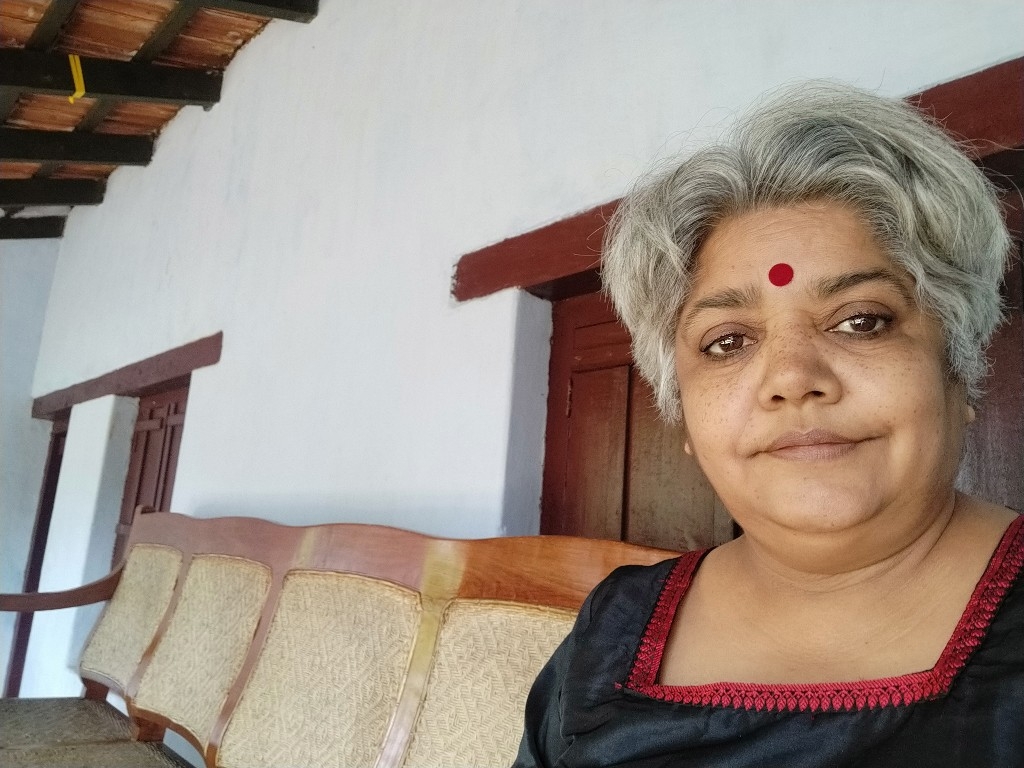
Title: Sexual and reproductive health & rights in Voluntary National Reviews of BRICS
Speaker Presentation
Ranjani K. Murthy
Researcher and Consultant, India
Abstract
Review of latest available Voluntary National Reviews (VNRs) of Brazil, Russia, India, China and South Africa (BRICS members) from the lens of SRHR suggests that the VNRs do not comprehensively analyse progress on SDG 5.6.1 (women’s ability to decide on reproductive health, contraceptive use and sexual relations) and 5.6.2 (countries with laws and policies that guarantee SRHR for those above 15 years). Neither do they assess whether if the past trends continue whether SDG 5.6.1 and 5.6.2 will be achieved and the remedial actions that are required on the part of the state. The attention to SRHR and its social determinants varies VNRs, with VNRs of China and Russia reporting on a narrow range of services with regard to maternal and child health and modern contraception, while that of South Africa, Brazil and India also including health system response to gender-based violence and prevention and treatment of sexually transmitted diseases. Reproductive cancer is mentioned in the VNR in India, as well as adolescent health. Attention to social determinants of SRHR is strong in VNRs of Brazil, South Africa and India, which identifies intersectional discrimination on the basis of gender, race, caste, class, disability, marital status and geographical location as a factor. The impact of COVID-19 is analysed with regard to MCH, not broader range of SRHR issues. Vibrant democracy and involvement of rights-based organisations by the state while formulating VNRs is crucial. Equally, existence of, and capacity to use, quantitative and qualitative data on SRHR is required. A word of caution however, the two communist/socialist countries, have a higher female work force participation than others, the implications for SRHR needs to be studied in VNRs.
Biography
I bring to the table around 25 years of experience in research, evaluation, e-teaching, training/toolkit development and mainstreaming on gender and development. My sectoral focus has been on of issues of economic health/SRHR, disaster-risk-reduction, adolescent girls’ empowerment, masculinities and international commitments like ICPD, SDGs, CEDAW, Beijing Platform for Action. My primary clients include UN organisations (including WHO and UNFPA), national governments, INGOs and NGOs. I was a Guest Tutor for the short course ‘Men, Women and Development’ as the Institute of Development Studies, Sussex for a year, and am a facilitator of two Modules in the course “Gender Transformative Evaluations in South Asia” organised by the Institute of Social Studies Trust, New Delhi. I combine global and regional reviews with field research, evaluations and training in India and Sri Lanka, Bangladesh, Afghanistan, Nepal, Moldova, Sudan, Mozambique, Cambodia, Indonesia and Vietnam. Before consulting, I was managing programs and leading an organisation on gender and development. I am on the editorial board of international journal Gender and Development, and on the board of three NGOs in India

Title: Rural Health Challenges and Coming Progress with the COVID19 Pandemic
Speaker Presentation
Dr. Linda R. Gordon
Pediatrician, Public Health Educator, Children’s Book Author, United States
Abstract
The COVID19 Pandemic had devastating consequences for the rural population with notable increase in the prevalence of infection and resulting morbidity and mortality. This finding is due to unique vulnerabilities that are the result of social determinants, geographic, and cultural. I hope to examine those unique aspects of the rural population in America and shed light on how those in public health and primary care, are addressing this health crisis. Special attention will be given to the pediatric population, and innovations in policy with resulting changes in healthcare infrastructure, and public health engagement. Innovations in healthcare will be described so as to highlight America rising to meet the needs of the rural population, which I have served for some twenty years. The formal discussion will be injected with anecdotal observations so as to provide personal context. It is my hope that this presentation offers a glimpse into some of the facets of rural healthcare in America and fosters comparative discussion for those other nations with similar challenges in general and resulting from the COVID19 Pandemic.
Biography
Linda is a General Pediatrician with a long history of working with the underserved in rural and urban settings. As well, she has worked in the non-profit and academic sectors as a public health educator. In this regard, her creative use of social media for civic engagement has been an addition to the public health discourse in the promotion of child health and well-being. In research, she has been a contributor to basic science and clinical investigation. Study subject has included the immunology of HIV, and the clinical effects of hypertension, diabetes, and lead toxicity in children. Her work with obesity includes community events such as health fairs and healthy cooking seminars in rural Alabama. In addition, patients in rural Georgia were invited to Zumba in the Park, courtesy of grant funding and non-profit support. This is to supplement the daily efforts to encourage the adoption of healthy lifestyle choices in the face of food deserts, inactivity, and poverty which exacerbate obesity for rural and BIPOC populations. Education: University of Virginia, B.A Chemistry, B.A French University of Chicago-Pritzker School of Medicine, M.D Emory University School of Public Health, MPH. Informatics

Title: How improved communication and collaboration can promote and accelerate innovations in public health
Speaker Presentation
Finja Daegling
Copenhagen University, Denmark
Abstract
Most progress in human history has been achieved by people sharing their ideas and collaboratively turning them into reality. However, despite us living in a time with an abundance of tools available to communicate, collaborate and inspire one another, we often struggle to do so.
How can we create work environments that facilitate effective collaboration and communication, thereby creating space for innovation?
The work of Angela Ducksworth, Brené Brown and Linda Hill provides guidance on how to do so. By promoting gritty environments, we can support each other in sustaining interest in and effort toward long-term goals; by having daring leaders we can ensure that failure is viewed as an essential part of progress, thereby allowing for creativity and open idea sharing; finally, through shared decision making, discovery-driven learning and collaborative problem solving we can achieve collective creativity and facilitate innovation.
Biography
Finja Daegling has a passion for preventive health care and health equity. She has obtained a BAS in Global Nutrition and Health and is currently completing her MSc in Global Health at Copenhagen University. She has worked with NGOs in Germany, Denmark and the Philippines, implementing various health initiatives on the local level. In her most recent position, she has supported the digital health flagship of WHO/Europe in delivering a key technical guidance document on the digitalisation of national health systems.
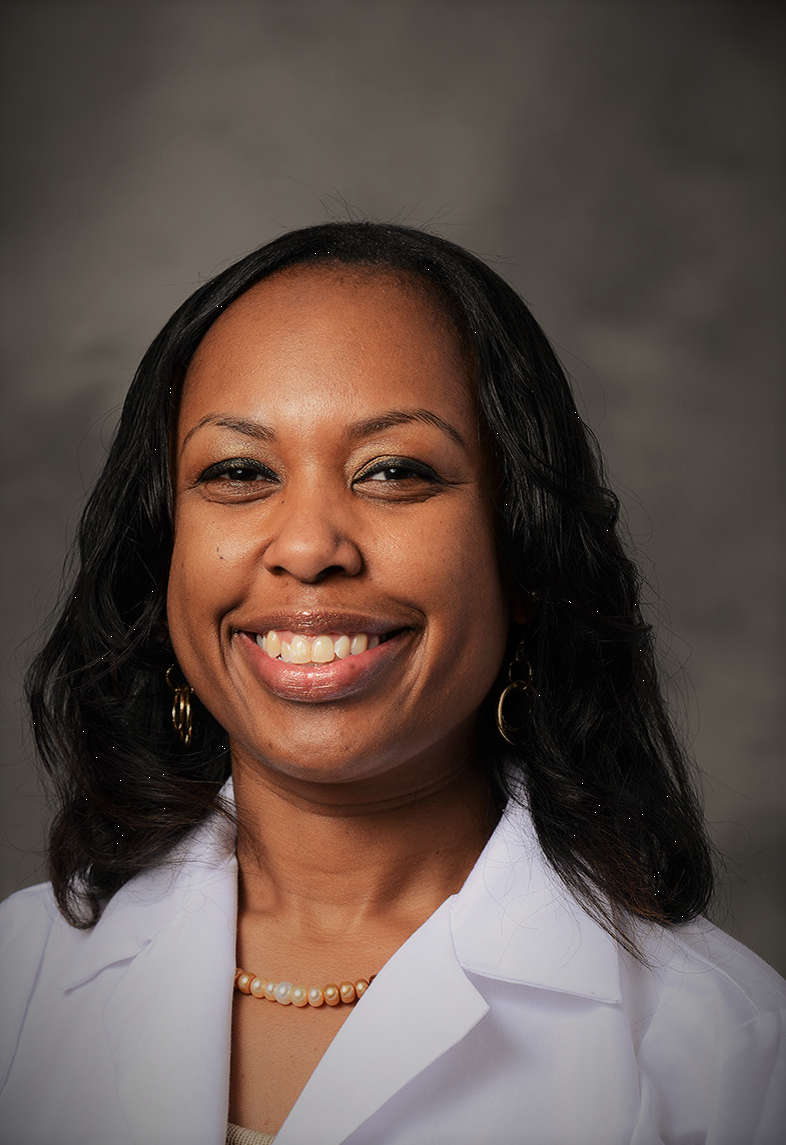
Title: Addressing the Public Health Issues of Mental Health
Speaker Presentation
Dr. Kenetra Young
Professor of Public Health, USA
Abstract
Biography
Dr. Kenetra Young has nearly 20 years of experience in the healthcare industry. She has a Bachelor of Science in Medical Technology, Master of Business Administration specializing in Health Care Management, Master of Public Health specializing in Community Health, and a Doctorate of Public Health specializing in Epidemiology. She started off her career journey as a laboratory scientist in chemistry/toxicology and blood banking. She later transitioned into Infection Prevention and Control where she researched and prevented hospital acquired infections. Dr. Young has taught collegiate level health science courses such as pathophysiology for 14 years, and has been teaching on-line graduate level public health courses for 6 years. Dr. Young most recently worked as a Communicable Disease Program Manager for a local health department where she oversaw a team of epidemiologists and supported contact investigations for food borne illnesses and reportable diseases such as hepatitis. She was responsible for the design of evaluation protocols, data collection instruments and data management tools that was used for conducting epidemiologic investigations and disease surveillance. Dr. Young has obtained several FEMA certificates have been front line with responding to critical incidents and disasters within both the hospital and public health settings. She received the 2018 Hometown Hero Award from the State of Michigan for her leadership and guidance during the Hepatitis A Outbreak response efforts. In addition, she co-led COVID-19 response activities, onboarded, and trained numerous partners to respond appropriately and effectively during the pandemic.

Title: Divergent Trends in Lung Cancer Incidence by Histological Subtype in the Philippines, 2003-2012: A Population-Based Study
Speaker Presentation
Jansen Marcos Cambia
Public Health Specialist, Taiwan
Abstract
Lung cancer is the leading cause of cancer incidence among men and the second most frequent among women in the Philippines. This study aimed to analyze the time trends in lung cancer incidence by histological subtype in the Rizal Region, Philippines for 10-year period. Data for calculating the lung cancer incidence rates from 2003-2012 was obtained from the Department of Health-Rizal Cancer Registry. The population data were obtained from the Philippine Statistics Authority. The average annual percentage change (AAPC) and 95% confidence intervals (CI) in lung cancer incidence rates per 100,000 populations by histological subtype, time-period, gender, and geographical location, were computed using ‘joinpoint’ regression analysis. A total of 8,832 cases of lung cancer were identified between 2003-2012 and 70.1% of them were men. Lung cancer incidence decreased from 28.37 per 100,000 between 2003 and 2007 to 22.15 between 2008 and 2012 (AAPC: -4.95; 95% CI: -6.20, -3.70). In men, incidence trends continually decreased (AAPC: -5.26, 95% CI: -6.70 to -3.80). However, in women, the incidence trend was observed to increase in 2005 and decreased thereafter (AAPC: -4.47, 95% CI: -6.00 to -2.90). Among specified subtypes, adenocarcinoma contributes the highest rate (2.23 per 100,000), followed by squamous cell carcinoma (1.31). Among Municipalities, the highest incidence rates were observed in Antipolo (20.0), and Mandaluyong (17.5). This study revealed divergent lung cancer trends by histological subtype, which were generally decreasing. Further studies are needed on risk factors of lung cancer and histological subtype to explain its etiology and changes in incidence.
Biography
He is a public health professional who graduated from the National Cancer Center Graduate School of Cancer Science and Policy, South Korea, in 2020. He focused on cancer control and population health. Since the end of 2020, he has been a Ph.D. candidate at National Yang Ming Chiao Tung University in Taiwan, where he focused on Social and Behavioral Sciences. He is currently a Research Assistant (RA), focusing on COVID-19 vaccine durability trials. Also, employed as RA at National Cheng Kung University in Taiwan in 2021, where he concentrated on child and adolescent development.
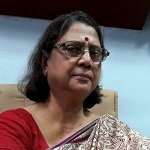
Title: Allergy, A global public health concern: Pollen allergy of Alstonia Scholaris and its remedy
Keynote Presentation
Prof. Swapna Chaudhuri
Emeritus Medical Scientist, Chittaranjan National Cancer Institute, India
Abstract
Biography
Prof. Swapna Chaudhuri is an alumnus of University of Calcutta. Presently she is an Emeritus Medical Scientist at Chittaranjan National Cancer Institute,Calcutta, India.She had joined School of Tropical Medicine in 2008 as Professor. Her research area is the fields of Cancer Immunology and Immunotherapy, Respiratory and Infectious Immunology and Immunotherapy, Cryptoccocal Immunology and Immunotherapy and Haematopoitic Stem cell Immunology and Immunotherapy.Taught at both postgraduate and undergraduate levels. Published seventy five papers in high impact factor journals and also reviews, monograms, book chapters, commentaries. Has won many Academic laurels and Fellowships, affiliated to twelve Academic Societies, Editorial Committee member of many National and International journals, Reviewer of fifty six high impact factor journals, Principal Investigator of twenty one projects, Supervised 21 PhD, MD and DM students. ORG

Title: Women health issues and challenges
Speaker Presentation
Shavone Brennen
Registered Nurse, Ministry of Health and Wellness, Bahamas
Abstract
Women health issues and challenges have long been a fundamental finding in health. Of more significance is the fact that women are the main caregivers, therefore, regard for self-care remains low until a turning point in the lives of these women occur that directly challenges their roles as caregivers. In 2019, it was recorded by Our World in Data that the global female working population of 51.34% has several contributing factors for women accessing health care. These include: maternal health, childcare policies, fertility, social norms, structural changes of the labor force and due to the recent pandemic unemployment. In addition, women face a disruption in continuity of care with a trusted health care provider. As this is the case When returning for a follow-up visit, she is presented with a different provider who due to structured health frameworks may not exude empathy. This sheds light on another aspect of the woman’s well being and mental wellness. Whether married or single women have the right to access medical care globally. Public Health departments must implement culturally sensitive and diverse services, continuity of care that seeks to provide a balance for not only the female client but also for its female workforce. These collaborative efforts involve governmental stakeholders, use of technology to connect with women in geographically disadvantaged climates and forging stronger alliances with all of it’s healthcare institutions that can make standardized women’s healthcare affordable. These services can be accomplished by adopting the World Health Organization guidelines or each country developing systems that suite their specific population needs. Additionally, there should be more focus on public awareness through community outreach with use of not only small group settings but also through video platform that would empower women to sustain healthy and productive life.
Biography
Shavone Brennen completed her ASN from the College of The Bahamas, and holds a postgraduate diploma in Midwifery from the University of The Bahamas in Nassau - Bahamas. She is employed as a Registered Nurse in the Ministry of Health and Wellness, in the Department of Public Health since 2009. As a newly graduated midwife, she is responsible for Women’s Health with a focus on Postnatal Period and Reproductive Health. She currently serves as a member of the Global Strategies for Nursing and Midwifery Bahamas team for Recruitment and Retention.
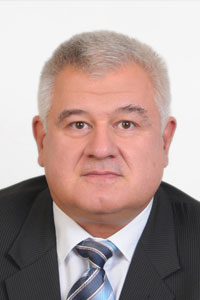
Title: IT Capabilities for enhancing the medical specialists awareness
Keynote Presentation
Prof. Rostislav Stefanov Kostadinov
Faculty of Public Health, Medical University Plovdiv, Bulgaria
Abstract
Summary
Introduction Information Technologies (IT) are in constant development throughout last decades. They are implemented in almost every our activity. The medicine is not exception and more and more medical IT devices are facilitating the diagnostic and therapy of a number of diseases. Recently, both medical and IT communities have combined their knowledge and efforts for confronting the challenges of the diseases with social significance - the malignant processes.
The objective of this study is to present the IT capabilities for enhancing the medical specialists awareness for possible malignant process development that could lead to earlier diagnosis and treatment and better prognosis.
In order to achieve the set goal the capabilities of contemporary IT tools as Big data, Machine learning and Artificial Intelligence are analyzed. The practical approach into implementation of the IT into building a modules for patients selection and grouping in accordance to the risks levels of developing malignant diseases and the links between machine - medical specialists, machine - patient at risk and medical specialist - patient at risk are presented and discussed.
Based on the results of the performed analyses a conclusion regarding the significant impact of the IT on medical specialists awareness and capabilities for early diagnosing and treating of the malignant process is noted.
Keywords: IT, Malignancy, Early diagnosis, Public Health
Biography
Prof. Colonel Rostislav Stefanov Kostadinov is Organizing and leading the educational process for Medical University of Plovdiv and Medical College of Plovdiv students. Delivering lectures, leading seminars and the students examine. Monitoring, organizing, and facilitating the International relations and Project activities of the Public Health Faculty academic staff. Organizing and leading Ph.D. and resident programs on Disaster Medicine and Disaster Medical Support at the Medical University of Plovdiv Planning, organizing, and managing courses for improvement of the population skills for healthy behavior in case of disasters and catastrophes. Leading and managing courses for disaster medical support (for medical professionals) and advance medical training for search and rescue team members.

Title: Covid-19 and HIV/AIDS: Effectiveness of ART in reducing mortality- A Meta-Analysis
Speaker Presentation
Dr. Dronesh Chettri
Public Health Professional, India
Abstract
Background: Patients who are immune-compromised have a poorer outcome from most serious infections, but this may vary depending on the type of immune deficiency and the pathogens. This study is conducted to assess the effectiveness of ART in reducing mortality in HIV/AIDS patients suffering from COVID-19.
Materials and Methods: Databases including PubMed, Medline and Scopus from May 2021 to June 2021 were searched for studies describing effectiveness of ART in reducing mortality among HIV/AIDS and COVID-19 co-infection patients. Quality assessment of the articles was done using CEBM checklist for different study designs. 486 studies were identified and only 8 were of fair and good quality. Statistical analysis was done using STATA version 16 based on random effect model.
Results: Out of total study participants, above 92.2% of PLWHA were on ART therapy. ART was associated with a higher effectiveness among HIV & SARS-CoV-2 infection (Effect Size 85.41; 95% CI; 78.35-92.48).
Conclusion: Findings conclude that among HIV patients receiving Anti-Retroviral Therapy and infected by COVID-19 disease, the risk of severity and mortality is comparatively less. Further investigation into the effectiveness of ART among HIV/AIDS co-infection is warranted.
Keywords - COVID-19, HIV, ART, SARS-Cov-2 and Coronavirus.
Biography
Dr. Dronesh Chettri is a dentist and a public health professional recently employed by the Govt. of Sikkim, India under the Health and Family Welfare Dept. He has completed his under graduation in dentistry from Himachal Dental College and his Masters, MPH from JNMC, KLE Academy of Higher Education & Research, Belagavi, Karnataka. He has a diploma in clinical research as well. His interests are in oral health, smoking and substance abuse, communicable and non-communicable diseases, mental health, maternal and child health, bio-statistics, occupational health, etc. During and after completing MPH, he has done various volunteer work, including monitoring and evaluation programmes, health camps, etc. He has over 10 years of experience in MS Office and over 2 years of experience in data analysis, including SPSS, Stata, etc. He also has a keen knowledge of artificial intelligence, machine learning, etc. Along with that, he has a certificate of French language translation and works as a freelance copy editor in various European languages, including Portuguese, German, and French. He is a member of IDA (Indian Dental Association) & IPHA (Indian Public Health Association) and is working towards establishing IPHA Sikkim Branch. Keeping his interest in mind, he has been involved in various national and international non-governmental organizations whose specializations were in child rights, geriatric care, mental health, disability care, truckers’ community, sex workers' health, and maternal and child health. He has co-authored 3 research papers and authored 2 original articles till date, with more to come in the future. Dronesh is a sports enthusiast who has participated in and enjoyed a variety of sports such as football, cricket, badminton, and basketball. He also enjoys writing his thoughts out loud on many topics of interest.
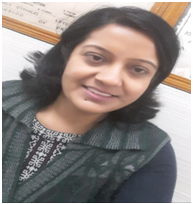
Title: A survey on disaster preparedness and risk reduction: lessons from ‘Yass’ in Bengal
Speaker Presentation
Dr. Satabdi Mitra
Assistant Professor, KPC Medical College and Hospital, India
Abstract
Introduction: ‘Yaas’, the ‘very severe cyclonic storm’ flogged the coastal parts of Bengal thrashing more than 4500 villages, numerous lands and homes and disrupted basic needs and health system at end of May, 2021. This massive hit in midst of COVID-19 pandemic literally devastated human lives within one year of ravaging ‘Amphan’. The current work was embarked to find out the cascading risk and insight of affected people into the disaster.
Materials and Methods: a cross-sectional survey was conducted among 550 people who were evacuated and sheltered in relief camps in parts of Patharpratima block in Sundarban, one of the worst affected areas. Demographic data were collected and 11medical camps were conducted in the area over 35 days starting from 2nd week of June, 2021.
Results: of total 550 victims under survey, age ranged from 3-76 years, 290 (52.7%) were male, 26 were under-5 children and majority belonged to low socio-economic status with average family size 4-5. On examination, 95 were detected to have some skin problems, respiratory infection was among 109 and 37 people reported as suffering from diarrheal illness while 5 people had some form of injury. Regarding preparedness, 370 (67.3%) admitted that they were informed on the disaster beforehand from administration but proper arrangement for their rehabilitation was not done. Rescue and relief was there but in irregular, inadequate and disorganized manner.
Conclusion: in the area context because of constant threat of disasters, area specific and targeted risk reduction and proper mitigation plans are need of hour.
Key words: disaster, ‘Yaas’, cascading risk, risk reduction
Biography
Dr. Satabdi Mitra is currently working as Assistant Professor in Department of Community Medicine, KPC Medical College and Hospital, West Bengal, India and involved in teaching, training, research and patient care services. She is national level trainer of Non-communicable diseases, Immunization and Leprosy. She has published research articles in different national and international peer-reviewed indexed journalsand working as reviewer of different journals. Dr. Satabdi is working for medical education and she is an active member of Medical Education Unit and Medical Education Society of India besides IPHA, IAPSM, EFI and ISAI, working as executive committee member of IAPSM West Bengal state chapter and a scholar of Geneva Learning Foundation. She has completed fellowship in Vector borne diseases from London School of Hygiene and Public Health in 2019. She has presented papers in different national and international conferences and awarded with Ford Foundation award for research proposal. She has contributed chapters in four of the books of community medicine and allied subjects.Currently she is working with non-communicable disease, food safety and doing fellowship in palliative care and COVID-19 Recovery fellowship.
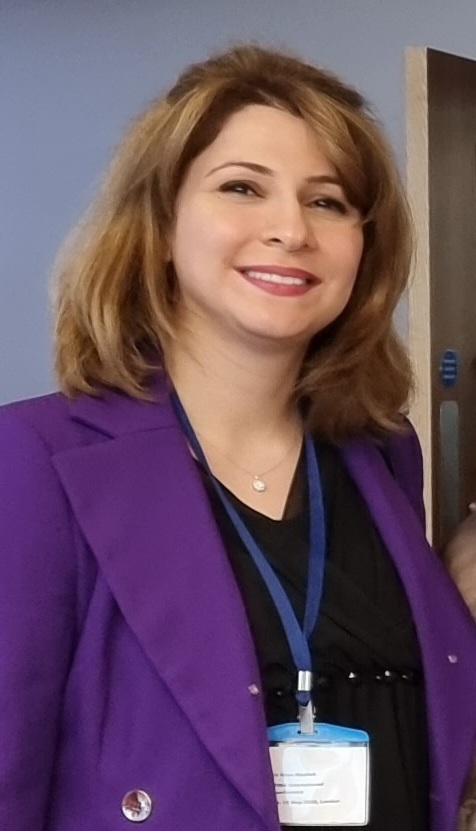
Title: Barriers Impeding Early Detection of Breast Cancer in LMICs, Iraq as an Example
Speaker Presentation
Dr. Mina Maallah
Clinical Research Fellow at the Clinical Research Facility / Research and Development Department, London North West University Healthcare NHS Trust, MBChB, MSc. (Public Health)
Abstract
Objectives: Iraq has witnessed an increase in the incidence and mortalities of breast cancer (BC) which is the most common malignancy among women globally. A tendency for BC patients to present at young ages and advanced stages have been clearly illustrated in Iraq. According to WHO, early detection is considered the main approach to control BC in limited-resource countries.
Methods: The “Social Ecological Model (SEM)” has been applied to investigate the barriers impeding early detection of BC (EDBC) in Iraq across five different levels: Individual, Interpersonal, Organizational, Community and Policy levels. The “knowledge, attitudes and practices (KAP)” framework was integrated to address the obstacles at the individual level.
Results: Iraq has witnessed a series of wars and political conflicts which negatively affected its health system. A national program for EDBC has been established since 2000 that included implementation of opportunistic mammography screening activities. Gaps in the awareness of BC were reported among the general population. Iraqi females emphasized the importance of including men in future awareness campaigns to achieve better impact specifically in rural areas. Various challenges were encountered including the adequacy of appropriate infrastructure and equipment, and the availability of the requested financial and human resources. Provision of palliative care measures were extremely limited.
Conclusions and Recommendations:
The National Program for EDBC in Iraq needs further strengthening through collaboration of the steak holders with the community leaders and cancer patients to overcome the existing barriers. The awareness campaigns accompanied by the requested diagnostic facilities should reach the remote underserved areas targeting all socio-economic levels. Urging the government to allocate sufficient financial resources to the program is mandatory to promote the information and surveillance systems and to ensure adequate capacity building of the staff running the early detection centres and clinics.
Biography
Dr. Maallah graduated from Baghdad University, College of Medicine in 2013; after which she served as a medical doctor at the Medical City, the biggest Tertiary Centre in Iraq for two years. In 2016, Dr. Maallah travelled to the United Kingdom to join the Master of Public Health Programme at City, University of London, from which she graduated with distinction in December 2017. In 2019, Dr. Maallah was granted the full registration with the General Medical Council and since then she has undertaken various roles as a junior doctor with the National Health Service of UK, extending her experience within the system. Those practiced roles included working at the Wolfson Neuro-rehab Centre in St. Georges Hospital, with the Breast Surgery Team at the Royal Marsden and the General Medical Team at Kingston Hospital. Currently she is working as a Clinical Research Fellow at the Clinical Research Facility of North West London in charge of clinical trials focusing on Covid-19 vaccines. Dr. Mina Maallah has an ambition to become a Public Health Consultant with special interest in the management of health inequalities in the disadvantaged societies and low-middle income countries specifically in the field of early detection of cancers.
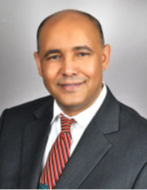
Title: Kess Waka Wassie Meskelo International Medical Center combined with International Clinics, International Biomedical Laboratories and International Research Diagnostic & Clinical Pharmacy at Tedda Area in Gonder – Ethiopia: Perspectives, Mission and Vision
Speaker Presentation
Dr. Aderajew Waka Wassie
University of Medicine in Germany, DRFZ Berlin and Seramun Diagnostica Biotechnology Company in Germany
Abstract
Kess Waka Wassie Meskelo International Medical Center combined with International Clinics, International Biomedical Laboratories and International Research Diagnostic & Clinical Pharmacy at Tedda Area in Gonder – Ethiopia: Perspectives, Mission and Vision
The above proposed innovative International HealthCenter „Establishing modern innovative Kess Waka Meskelo International Medical Centers (KW-MIMC) combine with International Clinics, International Biomedical Laboratories, International Clinical Diagnostic & Research Pharmacies” in rural and urban dwellers of the country is a crucial and inventive key point for the therapy of the patients, for diagnostic and prevention of diseases. Further important services are also doing on research, education, training purposes, and health consultation for medical as well as paramedical personals frontal or via technology based techniques. In addition, the medical (human & veterinary medicine) students, biomedicine, biotechnology/technology, and other relevant academic field students can get good advanced practical modern and high-tech oriented academic skills.
The joint Kess Waka Meskelo International Medical Center (KW-MIMC) will national and international wide all over Ethiopia and beyond cooperate, collaborate and working with different governmental and non-governmental academic and non academic institutions, governmental health offices, elementary & high schools, hospitals, district health centers and others.
Therefore, as an example, the main center of Kess Waka Meskelo IMC from Tedda Gonder will expanding and primarily building a strong network for cooperation and collaboration with Gonder University, Tedda Health Science College, Debark University, Debre-Tabor University, Bahir Dar University, Debre Markos University, Wollo University, Woldia University, Injebara University, Raya University,Mekdela Amba University, Addis Abeba University,Debre Birhan University,Samara University, Ethiopian Defence University, Ethiopian Police University,Ethiopian Civil Service University,Ethiopian Aviation University,Jimma University,Arba Minch University, Jigjiga University, Adama Science &Technology Universiy, Wollega University,Mekele University,Hawassa University, Asmara University,Haramaya University, Dire Dawa University,Gambella University, Dilla University,Wolaita University,Ambo University,Arsi University,Axum University,Bonga University,Dambi Dollo University,Jinka University,Kebri Dehar University,Borena University, Metu University,Mizan-Tepi University,Wachamo University,Wolkite University,Werabo University,Assosa University,Adigrat University,Bule Hora University,Werabi University,Massawa College of Marine Science and Technology and with other all Ethiopian governmental and private universities, colleges as well as within their own referral hospitals. Furthermore, this center will promote to perform modern innovative technology based biomedical/medical services. The MIMC is always open to collaborate and cooperate with all new open and here above not mentioned universities and colleges without any restriction.
The Kess Waka Meskelo International Medical Center will have a strong link cooperation and collaboration with International Health Institutions, Biomedical/Medical Laboratories, Hospitals, Universities, Non University Academies, Pharmaceutical companies, Private clinics and other international related research, educational and technological institutes. The IMC will fully cooperating, collaborating and working more closely with German institutions in all stated fields academically and socially.
The Kess Waka Meskelo IMC will connect and corresponding with other related natural environmental resources. Most of the Ethiopian inhabitants have direct and indirect relations with diary,poultry, different agricultural farms, house & wild animals, fishery and hotels as well as lodges/resorts. In this case, the IMC will play a big role to handle & to give appropriate medical services and reserve an appropriate as well as accurate medical products and medical devices for good and emergency time. Harmful biological and chemical products and toxins from dangerous animals like snakes are in the rural area a big problem for human and animals. It will be also very helpful for the community against unemployment and poverty by hiring the skilled or needed manpower within the community. The IMC has a priority for green technology, water reservation, water technology, solar or other alternative smart energy technology for an appropriate weather and climate reservations to reduce the natural risk on fauna and flora. Environmental health has here a more priority. The KW-MIMC will not focus only as like as the currently available national and international medical laboratories are doing but also KW- MIMC will focus and targeting additionally on manufacturing, research and development of new biological products like new effective/safe vaccines, medicaments/medical products, medical devices and nutrition to make safe/secure and prevent global health and economical disasters.
Finally, according to the above impressive vision and mission as well as enlightenment about the Kess Waka Meskelo IMC it is very worth full and important to establishing it and also to bring it in a short period of time in a practical work and public health service company. It is necessary for a country like Ethiopia with a dynamic development of population year to year unlimited, to have such kind of general international innovative science and technology oriented medical and biomedical health supply institution in short. Hence Kess Waka Wassie Meskelo International Medical Center with the combination of International Clinics, International Medical Laboratories, and International Research Diagnostic & Clinical Pharmacies at Tedda area in Gonder - Ethiopia is a mandatory meaningful and valuable Institution beyond health supply. It will be very helpful for education, research as well as a training center in a good and emergency time. In this way, the IMC can grow gradually for implementing the next modern global medical school for more production of qualified medical/health manpower to fight communicable & non-communicable diseases, zoonosis and unknown new born diseases in normal and emergency disaster/situation within the community all over the country and beyond globally. To summarize the whole information and background of this KW-MIMC, it is advisable to have a fully or complete health system like Global One Health Medical System for human and animals as well as Environmental Health nationally and internationally. This will be the final ambition and semi destination of the KW-MIMC in a country like Ethiopia.
Biography
Immunologist,Certified, Drug Safety Officer,Pharmacovigilance and Clinical Trials Specialist.Currently working at Seramun Diagnostica Biotechnology Company in the Dept.of Research and Development as a Research & Development Scientist in the field of Immunoassay.Completed PhD from Charite’-University of Medicine Berlin, Center for Internal Medicine and Dermatology, Internal Medicine Dept. of Rheumatology and Clinical Immunology; German Rheumatology Research Center Berlin; Institute for Immunology, Center for Infection Medicine of Freie University Berlin. Ambassador of Brain City Berlin for Science and Technology. Diaspora Expert for Developing Countries in relation to health, education, research and consultation. Co-advisor and lecturer for Master and PhD students & lecturer of undergraduate students in different Ethiopian Universities. Ambassador of Tedda Health Science College in Gonder/ Ethiopia. Board Member of Ethiopian Institute of Textile and Fashion Technology EiTEX & Biorefinery Research Center (BRRC of EiTEX) in Bahir Dar University-Ethiopia, Board Member & Co-Founder and General Secretary of International Verein für Gesundheitsförderung in Äthiopien (IVGFÄ) at Germany. Vice-President of Bridge Ethiopia Network for Science and Technology (BE-NeST) in Germany. Auditor of German Society for Lupus Research Society/ Deutsche Gesellschaft für Lupus Forschung (DGLF) e,V.in Berlin-Germany.

Title: Developing, implementing and refining Everton’s Blue Family Campaign
Speaker Presentation
Mr. Adam Howard
Senior Program Manager at Everton in the Community, United Kingdom
Abstract
In March 2020, coinciding with the World Health Organisation declaring Covid-19 a global pandemic, Everton Football Club and Everton in the Community launched ‘Blue Family’. Blue Family was a coordinated outreach and engagement campaign to maintain contact with fans and provide vital support and assistance to some of the most vulnerable, socially isolated, and at-risk members of the community. COVID-19 has significantly impacted people’s mental health and wellbeing, with the aftereffects likely to be substantial and long term. COVID-19 has also accelerated and deepened existing inequalities, with certain groups disproportionately affected. These include the socio-economically disadvantaged, ethnic minorities and people with mental health and/or long-term health conditions. This means that we urgently need strategies which support people living in more disadvantaged and deprived communities. (Daly et al, 2020). This presentation will outline the development, implementation, and refinement of the Blue Family Campaign through the various stages of the pandemic and beyond. Key learning that was discovered through this process consists of adopting a preventative approach to low-income families reaching crisis-point, the need to ensure that families living within deprived communities have better access to healthy, affordable food, and highlighting the importance of a collaborative approach between key stakeholders involved in public health initiatives and charities.
Biography
Having graduated university with a 1st Class Honours & Masters by Research degree in Sports Development, I am relishing the opportunity to put all my theory into practice. I currently work as the Sports Volunteering Coordinator within the Sports service at Manchester Metropolitan University. This role has provided me with the platform to create and manage a large project (involving over 1000 volunteers). Furthermore, it has provided me with opportunities to deliver a number of large sports events across Greater Manchester. I'm a motivated, hardworking and an ambitious individual. I enjoy working in a team and also on my own initiative and this role has given me the experience of working under pressure in a fast-paced environment. I thoroughly enjoy providing a service for volunteers and love seeing them develop and grow as they participate in our Programme. Indeed, working in the sports development sector is my main passion. As I move through my career, I aim to provide sporting opportunities to as many people as possible. Outside of work my main hobbies include playing and watching football. I currently play Semi-Professional Football for Ashton Athletic. Furthermore, I thoroughly enjoy expanding my knowledge by watching documentaries and reading scholarly-based articles on real-life topics.
“ Will be updated soon...”
+91 9491 456 452
Door No.200, Immidhihalli Main Road, Whitefield-560066, Bangalore, India
About Us
Global Scientific Guild organizes conferences and webinars to promote quality research and real world impact in an atmosphere of true international co-operation between scientists, doctors, professors, practitioners, engineers and industry by bringing together the world class renowned personalities to discuss the latest developments and innovations at one common platform.